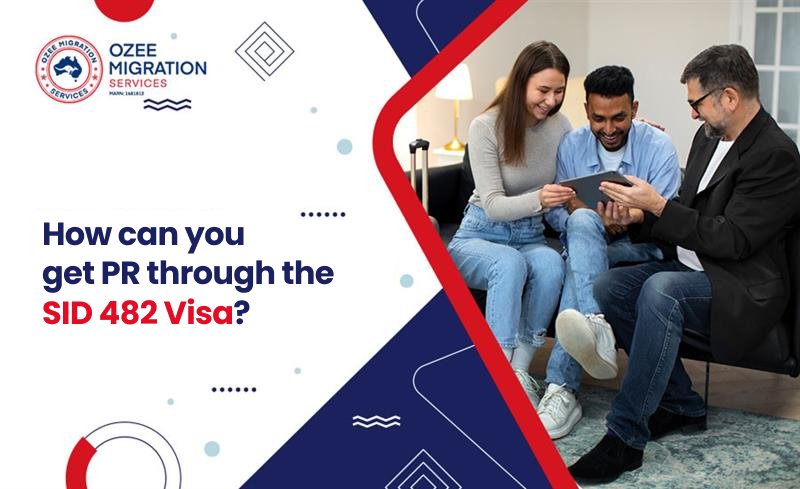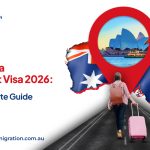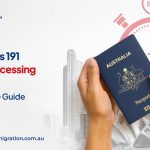
The Subclass 482 Visa, previously known as the Temporary Skill Shortage (TSS) Visa, has now been replaced by the Skills in Demand (SID) Visa as of 7 December 2024. This new visa continues to serve as a vital pathway for skilled workers to come to Australia and address ongoing skill shortages across key industries. Under the SID visa, eligible skilled workers can be sponsored by approved Australian employers to fill roles where local talent is unavailable.
Importantly, the SID Visa offers a clear pathway to permanent residency through two main streams: the Employer Nominated Scheme (ENS) and the General Skilled Migration (GSM) program. With the introduction of the updated Core Skills Occupation List (CSOL)—covering 456 in-demand roles—the SID visa aligns more closely with current labour market needs.
Given its structure and intent, the SID visa is expected to support a significant number of skilled migrants in successfully transitioning to permanent residency, reinforcing its value as a stepping stone to a long-term future in Australia. Understanding the updated requirements, eligibility pathways, and PR transition options is now more important than ever for applicants planning to settle permanently.
In this guide, we will understand SID 482 Visa and its pathways to permanent residency, criteria you need to meet and alternative options available to SID visa holders who are interested in staying temporarily and long term.
Understanding the SID – Subclass 482 Visa In 2025
The Skills in Demand (SID) 482 Visa is a vital part of Australia’s skilled migration program, enabling highly skilled overseas workers to temporarily fill labour shortages across various sectors. Visa holders are only permitted to work for the employer who nominated them and must maintain appropriate health insurance during their stay in Australia.
To access the Temporary Residence Transition (TRT) pathway to permanent residency, both the sponsoring employer and the visa holder must meet certain conditions. The SID 482 Visa is linked to occupations listed on the Core Skills Occupation List (CSOL)—a comprehensive list of roles identified as being in high demand across the country. It is essential to ensure the nominated occupation appears on the CSOL to qualify for this visa.
Step-By-Step Pathways To Permanent Residency For 482 Visa Holders
Now that we have a grasp of the SID 482 visa, we will explore the various options that SID visa holders have for gaining permanent residency in Australia.
These pathways include both Employer Nomination Scheme (ENS) and General Skilled Migration (GSM).
Employer Nomination Scheme (ENS)
The Employer Nomination Scheme (ENS) offers permanent residency for skilled workers sponsored by an Australian employer through three streams.
- Direct Entry Stream: A special path that leads to getting PR based on the skills assessment test, skilled employment, and employer nomination. The Direct Entry Stream leads to a permanent residency of a sponsoring employer with a positive skills assessment. The process involves satisfying the nomination and visa requirements provided you are not beyond 45 years old unless the PR age limit is applied for the 482 visa
- Labour Agreement Stream: Involves signing a Labour Agreement under a government regulation with an employer addressing the specific labor market needs. The Labour Agreement aims to fill the gaps in the skilled workforce by providing a pathway to permanent residence for migrants sponsored by employers. Employers are allowed to sponsor overseas workers in occupations that are not listed on the normal skilled occupation list.
- Temporary Residence Transition (TRT) Stream: The Temporary Residence Transition (TRT) Stream under subclass 186 ENS visa is the another pathway to permanent residency for SID visa holders. Typically, this visa is given to SID visa holders who have been engaged by the same employer for three years and who need employer sponsorship to further their application for permanent residency.
The process involves employer-sponsored registration under the TRT stream and compliance with all nomination and visa regulations. Efficient procedure for SID visa holders who are likely to remain with their employer and contribute to the Australian labor market.
To be eligible for the ENS 186 visa, applicants must meet the following criteria:
- Employer Nomination: The nominee must be nominated by an approved employer in Australia. The employer is required to show that there is a real need for the nominated position, and also have to meet certain requirements, for example, to pay the market salary rate.
- Age Limit: All applicants must be under 45 years old when their application for permanent residency is first deposited, with the exception of those who have a waiver. Exemptions can be permitted for specific jobs like academics or high-income jobholders.
- Occupation and Skills: Applicants should have what it takes to meet the job requirements, whether it is experience, education, or technical abilities. The applicant must have the qualification for the job which is on the relevant skilled occupation list.
- English Language Proficiency: Visa requirements vary according to the English language proficiency level that applicants must prove.
- Health and Character: Health and character suitability tests are required of the applicants at the visa issuance stage.
General Skilled Migration ( GSM)
General Skilled Migration offers the opportunity of permanent residency and citizenship to skilled workers. It is a points-based system, considering criteria such as age, education, work experience, English proficiency, etc. The transition from the 482 Visa to permanent residency in Australia involves meeting requirements under the ENS and GSM Streams and ensuring compliance with visa regulations, as well as being eligible through skills, qualifications, and employer sponsorship.
A GSM visa normally gives the applicants two options: either a direct permanent residency or some years to live and work in the designated country on a provisional visa, with a future chance to apply for permanent residency. These kinds of visas are generally in high demand because they give people a means to become permanent residents of Australia. The GSM visa category is divided into multiple visa programmes which include the Skilled Independent (Subclass 189) visa, the Skilled Nominated (Subclass 190) visa, and the Skilled Work Regional (Provisional) (Subclass 491) visa.
To be eligible, applicants must:
- One of the things that are being targeted is be under 45 years of age.
- Have a strong occupation outlined on the Skilled Occupation List.
- Get a positive skills assessment for their occupation advised.
- Match the minimum score, which at the moment is 65 points.
- Show your skills of English language.
- Must comply with health and character requirements.
Transitioning from SID 482 Visa to Permanent Residency
Requirements for 482 Visa Holders to Apply for Permanent Residency
Every job that is under the SID 482 visa will have access to permanent residence expectedly through the Employer Nominated Scheme (subclass 186) in the Temporary Residence Transition (TRT) stream.
Key Requirements Include:
- Being under 45 years of age at the time of applying for permanent residency, unless eligible for an age exemption.
- Meeting qualifications, work experience, English language proficiency, health, and character requirements.
- Paying the Skilling Australian Fund (SAF) levy, which is either $3,000 or $5,000 depending on the nominator’s business annual turnover.
Getting a Permanent Residency without an Employer
- If you do not have a family member who is an Australian citizenship holder or permanent resident and your employer doesn’t nominate you, the General Skilled Migration (GSM) route becomes the most obvious choice to follow.
- GSM visas are points-based, where the candidates are scored with emphasis on factors like age, education, work experience, language proficiency, and other such criteria.
- Candidates have to secure a certain amount of points to be eligible, and substantial candidates either get a permanent residency or a conditional visa with a route to permanent residency
Navigating the Application Process
- See whether you match the requirements for permanent residency on the category you belong to.
- Complete the skills assessment by submitting an application to either assessing authority, both of them or any other relevant assessing authority with required certificates/documentation evidencing your skills and work experience.
- Following your expression of interest in a permanent residency to Home Affairs, Department through Skill Select, do not forget to give a detail of yourself showing your suitability.
Permanent Resident Rights and Duties
- Those who have been granted permanent residency and live in Australia, enjoy the privilege to pursue their desired occupation and study without the hindrance of any restriction.
- They get the same privileges as citizens despite the fact that they are not eligible to hold an Australian passport and they cannot vote in Australian Federal, State, and Territory elections.
- Setting up the idea of being a permanent resident means the expectation to follow all the laws and to act in a responsible way when living in Australia.
Wrapping Up
Transitioning from the SID 482 Visa to permanent residency is a significant step that requires clear understanding of eligibility, the right timing, and awareness of available PR pathways such as the Employer Nominated Scheme (ENS) or General Skilled Migration (GSM). While the process can seem complex, the right support and guidance can make a real difference.
If you’re unsure about where to begin or how to move forward, speaking with professionals who understand the system can be incredibly helpful. Ozee Migration brings valuable experience working with skilled applicants across various industries and offers support tailored to individual circumstances—not just paperwork, but real advice based on real cases. With their help, many have successfully navigated the journey from temporary visa holder to Australian permanent resident.
Recommended Read: 491 Visa for Skilled Workers: Key Industries and Job Opportunities
Recent Posts
 What Are the Latest Changes to the Subclass 186 ENS Visa?December 23, 2025
What Are the Latest Changes to the Subclass 186 ENS Visa?December 23, 2025 How to Choose the Right Visa Pathway for Australia in 2026December 19, 2025
How to Choose the Right Visa Pathway for Australia in 2026December 19, 2025 Australia Student Visa 2026: A Complete GuideDecember 10, 2025
Australia Student Visa 2026: A Complete GuideDecember 10, 2025 Subclass 191 Visa Processing Time: Complete Guide for 2026December 4, 2025
Subclass 191 Visa Processing Time: Complete Guide for 2026December 4, 2025 Skills in Demand (SID) Visa Subclass 482: Your Complete 2025 GuideNovember 26, 2025
Skills in Demand (SID) Visa Subclass 482: Your Complete 2025 GuideNovember 26, 2025

